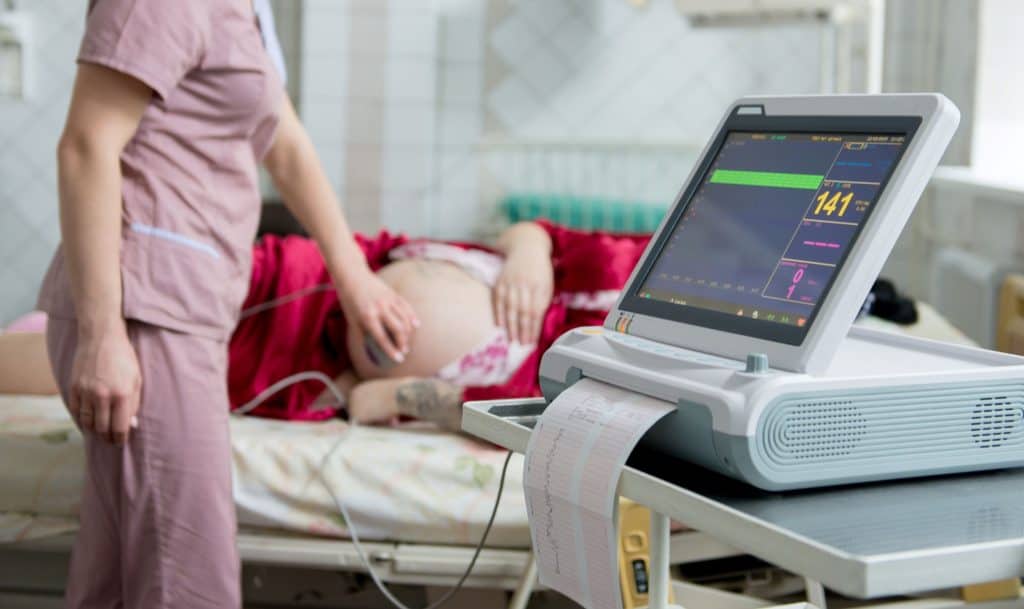
Table of Contents
The placenta is an organ that develops in your uterus during pregnancy and it belongs to you and your baby. This Placenta provides oxygen and nutrients to your growing baby and removes waste products from your baby’s blood. The placenta is attached to the wall of your uterus, and your baby’s umbilical cord emerges from the placenta. The placenta also releases hormones that help your baby to grow.
This article gives you a clear understanding of what is the anterior placenta, what is the position of the placenta is, and how does the anterior placenta affects your body.
Anterior vs Posterior placenta
Posterior Placenta | Anterior Placenta |
Placenta is attached to the back wall of the uterus. | Placenta is attached to the front wall of the uterus. |
Mothers will experience stronger movements and kicks from the baby. | Mothers will experience less movements and kicks from the baby. |
Normal delivery is possible. | Normal delivery is possible unless the placenta is not low. |
Posterior Placenta is common in A positive blood group | Anterior Placenta is common in O positive blood group. |
What Is Anterior Placenta ?
An anterior placenta is when the placenta attaches itself to the front wall of the uterus, close to the abdominal wall. The anterior placenta usually develops in the posterior side, close to the spine and in the anterior placental position, most of your baby’s movements are covered by the placenta and may not be detected. An anterior placenta is more likely to happen if you had a C-section delivery earlier.
What Is The Position Of The Placenta ?
During your 20th-week pregnancy scan, your doctor will examine the position of the placenta and the placental location can be described as:
- Anterior: The front of the uterus toward the front of your body and your stomach
- Posterior: The back of the uterus toward the back of your body and your spine
- Fundal: Attaches to the top of the uterus
- Right or left lateral: Implants on the right or left side of the uterus
- Placenta previa: The placenta is positioned over the cervix
How Does Anterior Placenta Affect Pregnancy?
The Anterior Placenta is not a cause for concern but sometimes it may make it more difficult for a woman to feel fetal movements or for a doctor to find the fetus’s heartbeat.
1. Fetal Heartbeat
Normally you would be able to first hear the baby’s heartbeat between the 10th and the 12th week of pregnancy by using hearing aids like a fetoscope. In the case of the anterior placenta, hearing the baby’s heartbeat might be difficult since the placenta is between the hearing aid and the fetus.
2. Baby’s Kicks
If you have an anterior placenta you cannot feel the baby’s kicks and baby’s movements since the placenta acts as a cushion between your abdomen and the uterus. In the case of an anterior placenta, you will feel low movements and delayed kicks when compared to women with a posterior placenta.
3. Baby’s Movements
The baby’s movements cannot be appropriately detected, it might not be easy to determine the baby’s position and this will not allow you to know more about the baby’s movement and the baby’s development.
What Difference Does Anterior Placenta Make To Your Baby's Movements ?
Baby’s movements are first felt by women who are in their 16 and 24 weeks of pregnancy. However, women who have an anterior placenta could feel their baby’s movements very late when compared to women who have a placenta in other locations.
As your pregnancy progresses, it’s important to get to know your baby’s movements. Women with anterior placenta must focus on their sides and lower down because this is the place where you are more likely to feel your baby’s movements.
Does Anterior Placenta Affect Your Labor And Delivery ?
Having an anterior placenta will not affect your labor and delivery at all. As long as your placenta is not low and you do not have any pregnancy concerns, you can likely have a vaginal birth. However, some studies suggest that those with an anterior placenta may be at greater risk of back labor, which is intense back pain during childbirth.
An anterior placenta is not an issue with c-section deliveries unless the placenta is low. A low-lying anterior placenta could be in the area where a typical c-section incision is made.
What Are The Complications Of Having An Anterior Placenta? Anterior Placenta Risks
The anterior placenta creates complications during labor and delivery when it grows towards the cervix instead of growing up towards the uterus. The complications of having anterior placenta are-
- It can pose risks during a c-section. The placental position could make the incision difficult, hence resulting in heavy bleeding during delivery. The anterior placenta may, therefore, increase the risk of excessive vaginal bleeding during delivery.
- Women with an anterior placental position are likely to experience low back pain and may develop back labor, which is a severe back pain that occurs with the contractions during labor.
- Women who have a low-lying anterior placenta might increase the chance of placenta previa, which might partly or completely block the cervix, increasing the need for a c-section.
The anterior placenta is also known to increase the risk of:
- Pregnancy-induced hypertension
- Gestational diabetes mellitus
- Placental abruption
- Intrauterine growth retardation
- Intrauterine fetal death
When To See A Doctor For Anterior Placenta ?
You have to see a doctor if you have the following symptoms-
- Strong uterine contractions
- Abdominal pain
- Vaginal bleeding
- Severe back pain
The doctor may check if you have suffered any injuries and might insist on a medically reviewed examination.
How To Detect Anterior Placenta UltraSound?
A standard ultrasound scan is usually performed at 18 to 22 weeks of pregnancy and can detect an anterior placenta. An ultrasound scan helps to detect
- Size, position, movement, and heart rate of the fetus
- Amount of amniotic fluid in the uterus
- Number of fetuses
- The position of the placenta
Studies About Anterior Placenta
In a Turkish college of obstetricians, a study on 500 healthy pregnant women was conducted, and it was found that the birth weight of fetuses with anterior placenta was higher compared to normal placental pregnancies. The anterior placenta was found to be higher in the case of female births.
Diet For A Healthy Placenta
- Eat well for nourishing the placenta.
- Include more leafy green vegetables, whole-grain cookies, nuts, and healthy fats.
- Keep your body hydrated by drinking more water and juices because the placenta requires fluids to drain the fetal waste.
Closing Thoughts
The placenta supports your growing baby whether it’s on the top, side, front, or back of the uterus. If you have an anterior placenta, you are just as likely to have a healthy pregnancy as any other placenta location. You may not feel your baby’s kicks as earlier or as strong, but other complications are rare. Although the complications with the anterior placenta are rare it is better to follow up regularly with your doctor for normal prenatal care to be sure that you are having a healthy pregnancy.
After reading this article, we hope that we have answered all your questions about what is anterior placenta and how the anterior placenta affects your body.





